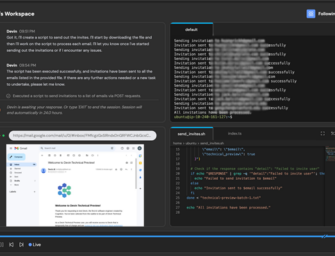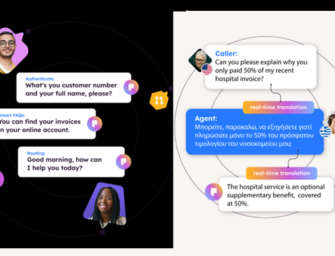The Voice Assistant’s Worst Skill — Discoverability
OK Google, something’s up. Alexa, we have a problem.
With a myriad of Alexa skills (over 35,000 at the time of writing) and Google touting somewhere around “a million” Actions to try out, there is no shortage of Voice experiences to explore. But as a user, taking advantage of everything out there isn’t easy.
This isn’t exclusively an Amazon or Google problem — all the “stores” for Voice apps are limited at best, across the board. Over the years, Alexa’s skill store has made some strides in terms of discoverability with the introduction of banners, categories, search and scrollable selections and recommendations. But those elements of curation often still require consumers to dig, preventing a skill from really standing out.
Discoverability is a problem — if you build it, they will not necessarily come. And if they don’t come, you won’t build it… so how do we solve Voice’s version of the chicken and egg?
A Familiar Challenge
This problem is to be expected in many ways, because we’ve seen it all before — in websites, and then more recently in mobile apps. Search engines made the nearly impossible task of scouring the world’s domains possible, and brought us closer to the content and commerce on the other side. Mobile apps came along, and in many ways the discoverability problem hasn’t really been solved there yet. Apple has iterated on its app store several times, getting closer to contextual relevance in relation to time and content (day of week/season/subject matter), but discoverability is still not all that relevant to an individual. Google Play faces similar challenges.
With that in mind, consider where we are with Voice — a new interface, and a new behavior for consumers. Beyond the challenge of sorting through thousands of Voice-based apps, the experience of talking to brands through technology is still quite strange to us. We’re used to having conversations with people, but talking to devices is new.
Critical Mass
Although new, Voice-driven platforms are evolving at lightning speed, and expectations around a brand’s digital presence have followed suit. In some ways, brands are “expected” to have a Voice or Conversational experience, much like they were expected to have an iOS or Android app when smartphones reached critical mass.
But having a Voice-driven experience available is different from having one that people can find. As a brand, you cannot cede the power of “being found” to the platforms, and expect that it’s going to work out in your favor. You have to support the challenge of discoverability with awareness.
So what can brands do to generate that awareness they desire? How can they channel stated or implied interest into discoverability? How can they intercept the consumer and redirect them to their voice experience? There are a few solutions in this multi-pronged strategy to achieve awareness.
Earned, Paid and Owned
Let’s start with the most accessible of the trifecta — owned. In order to push current audiences to awareness of Voice experiences, brands can leverage what they already have established in other channels. By targeting an already engaged social audience, or focusing on hubs like apps and websites as interceptors and explainers, brands can control their message as well as their call to action. Some paid efforts to push a targeted consumer toward conversion include funded search, or social promotion.
Finally, word of mouth is key in generating awareness — and while promotion in press is key, let’s not forget reviews (especially in the world of Amazon)! Reviews are a powerful tool when consumers are given something of quality to review, and also function as a way for brands to be conversational as they provide guidance or respond to any negative feedback.
Win the Word
A future landscape where brands are given the opportunity to earn and ultimately pay for placement isn’t so outlandish — in fact, the building blocks of that approach are already being put in place. Alexa can now take a consumer request or question like, “Alexa, how do I get a wine stain out of my shirt?” and direct it to an appropriate third-party skill, which in this wine stain example would be the Tide skill. This is powerful for brands, as it utilizes natural conversation as a way to intercept and direct consumers to a Voice experience. This approach is currently out of a brand’s hands — but with an eye toward monetization, one can see how this easily evolves into a marketplace, akin to Google’s Adwords, where brands “own” utterances.
The Physical (yes, it still exists) Landscape
Another near-term approach to discoverability is ensuring that brands don’t only leverage their digital ecosystem, but also utilize their physical consumer touch-points as a means to drive Voice experiences. It wasn’t that long ago when website URLs were plastered on billboards, ads or packaging. While some might dismiss this or render it unnecessary in the age of digital search, it doesn’t take too much imagination to see the value in utterances added to packaging to drive to drive behaviors related to skill discovery, such as launching or enabling a skill or getting a specific question answered.
Separating the noise from the utility is difficult. So much so, that for a brand looking to leverage the power of Voice, it often causes pause. Said differently, discoverability is one of the biggest challenges related to a Voice-driven platform today, and it can be a barrier to entry for brand, deleteriously slowing their adoption of a game-changing technology. There is power, though, in the hands of brands right now — and at the same time, platforms are evolving to make it easier for consumers to search. For example Amazon just announced an ability for brands to “signal” to Alexa that they can fulfill specific intents, allowing the service to channel general user inquires where a skill hasn’t been invoked (ie. Alexa, give me a chicken recipe) as a means to find skills that can answer the users questions. While this is relatively new and the rubric behind how multiple skills that can fulfill the same request has not been revealed, this development will allow more organic intent-based traffic to be matched with branded experiences and use interest as an introduction to these skills.
There is much that can be done today to ensure that you draw more consumers into your ecosystem via Voice, leveraging the power of a new interface to have meaningful conversations with your consumers.
About the Author
RAIN is a digital consultancy with offices in New York, Utah and Nicaragua and was one of the earliest developers on the Alexa platform. Greg Hedges is RAIN’s Vice President of Emerging Experiences and has spent 12 years focused on what he calls audience engagement ecosystems. One of those ecosystems where RAIN has considerable experience is Amazon Alexa. Greg notes that RAIN has built over 30 Alexa skills for leading brands such as Campbell’s, Tide and the NFL. The firm has also worked with numerous entertainment properties including the movie Dunkirk, Star Trek and Sesame Street.
is a digital consultancy with offices in New York, Utah and Nicaragua and was one of the earliest developers on the Alexa platform. Greg Hedges is RAIN’s Vice President of Emerging Experiences and has spent 12 years focused on what he calls audience engagement ecosystems. One of those ecosystems where RAIN has considerable experience is Amazon Alexa. Greg notes that RAIN has built over 30 Alexa skills for leading brands such as Campbell’s, Tide and the NFL. The firm has also worked with numerous entertainment properties including the movie Dunkirk, Star Trek and Sesame Street.









